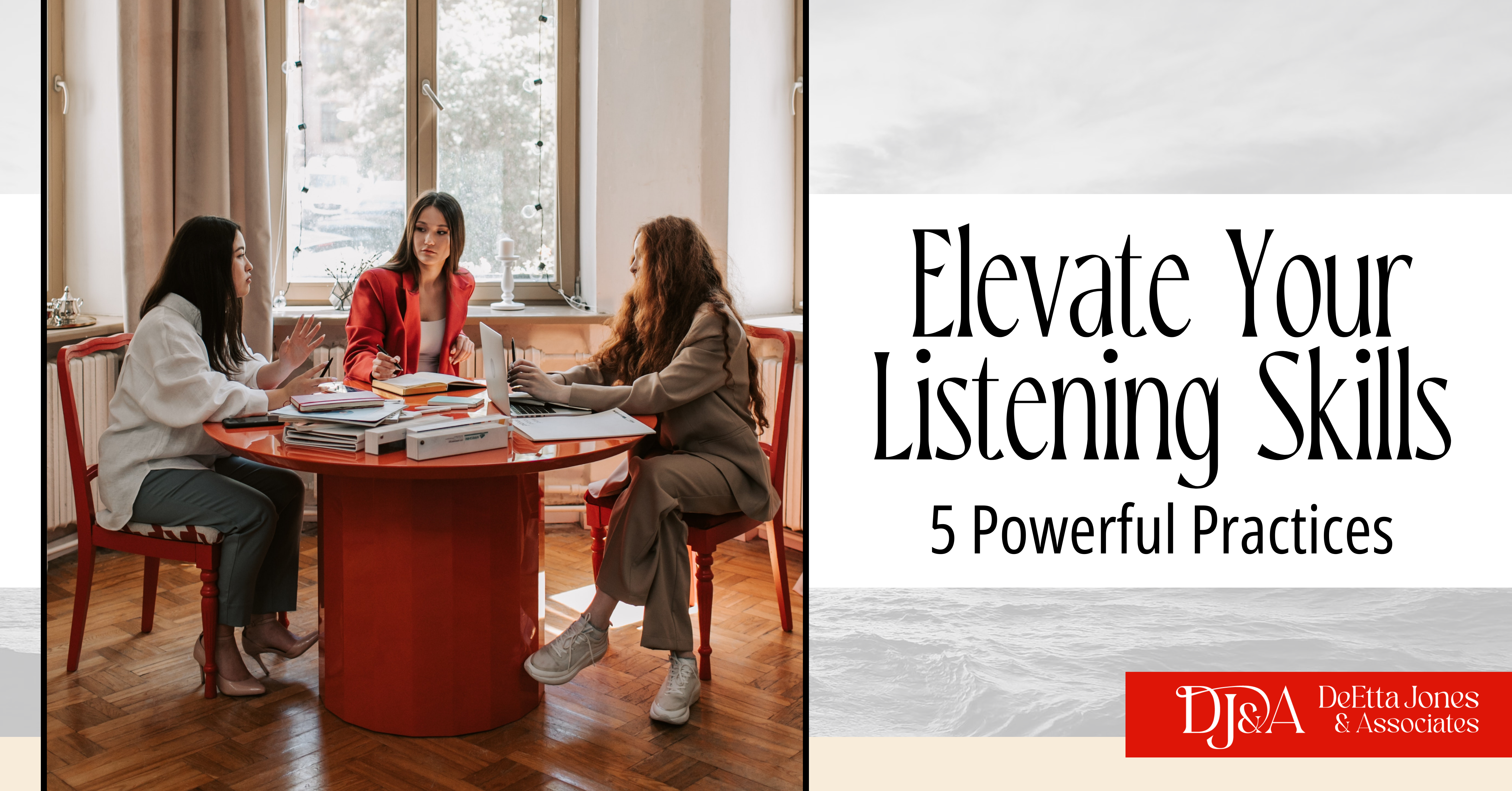In a world inundated with communication, the essence of true connection often eludes us. While we're sharing more than ever, the richness of effective communication gets lost without the human nuances of voice, tone, and body language. In this post, we'll delve into the necessary ingredients for good communication and explore how mastering the art of constructivist listening can transform your ability to connect with others.
Listening is not just about hearing words; it's about understanding the full meaning, capturing nuances, and creating a space for authentic expression. This kind of listening involves picking up on the unsaid, the subtleties hidden between the lines. It's about providing individuals with enough time and uninterrupted space to share their story in their own voice and allowing them to construct their own narrative.
Inclusive Listening in Action
How you listen can and should be a testament of your values–conveying that you care about other people. Listening conveys your inclusive values when you actively place the person in control of their narrative. Unlike many of the conversations that often lead to transactional exchanges, focus instead on asking open-ended questions, inviting other points of view, and actively conveying interest through your nonverbals.
Why Listening Matters
In a noisy world where people often crave more meaningful connections, your ability to listen will stand out. You can provide opportunities to go beyond surface-level exchanges, offering a space where deeper, more substantive conversations can thrive. This skill is particularly crucial in today's environment, where space to explore differences and create a shared understanding is rare.
Actionable Micropractices
1. Practice Pausing- Cultivate the habit of pausing before responding to allow space for intentional reflection.
- Challenge your mental models by considering alternative perspectives.
- Delve into why you hold the beliefs you do and where those beliefs originated.
- Regularly examine and update your beliefs to foster openness and growth.
- Approach conversations with genuine curiosity.
- Create and use breadcrumbs to facilitate a journey from surface to deep learning and understanding. Like real breadcrumbs in a forest, these educational markers ensure a step-by-step journey, taking you from easy-to-access information and perceptions about a person to more meaningful understanding that comes with engagement and a caring relationship.
- Resist the urge to immediately look for commonalities.
- Allow others to guide the direction of their thoughts, comments, and sharing.
- Be aware of your own filters and biases in interpreting information.
- Make an effort to understand the viewpoint of others. Don't assume things about them, such as their needs, motivations, or expectations. Be aware that differences may exist and actively acknowledge them.
By integrating intentional and inclusive listening practices into your communication toolkit, you embark on a journey of deeper understanding, connection, and personal growth. As you apply these practices, not only will you enrich your own experiences, but you will also contribute to creating a more compassionate and culturally competent community.
Keep listening, keep connecting, and keep growing. Looking for a learning path? Join us for our signature course's April 1, 2024, cohort of the Inclusive Manager's Toolkit (IMT). At the end of 10 weeks, you will learn skills and be provided with tools to:
- Understand how your behavior impacts others
- Adjust your behaviors and approach in different contexts
- Establish a sense of safety and belonging on your team
- Facilitate meetings to encourage participation and creativity
- Give constructive feedback in a way that effectively addresses issues and preserves the relationship
- Initiate and engage in difficult conversations
- Influence others to listen to your ideas or buy-in to a course of action you outline
We would love to be part of your ongoing journey.
DeEtta

